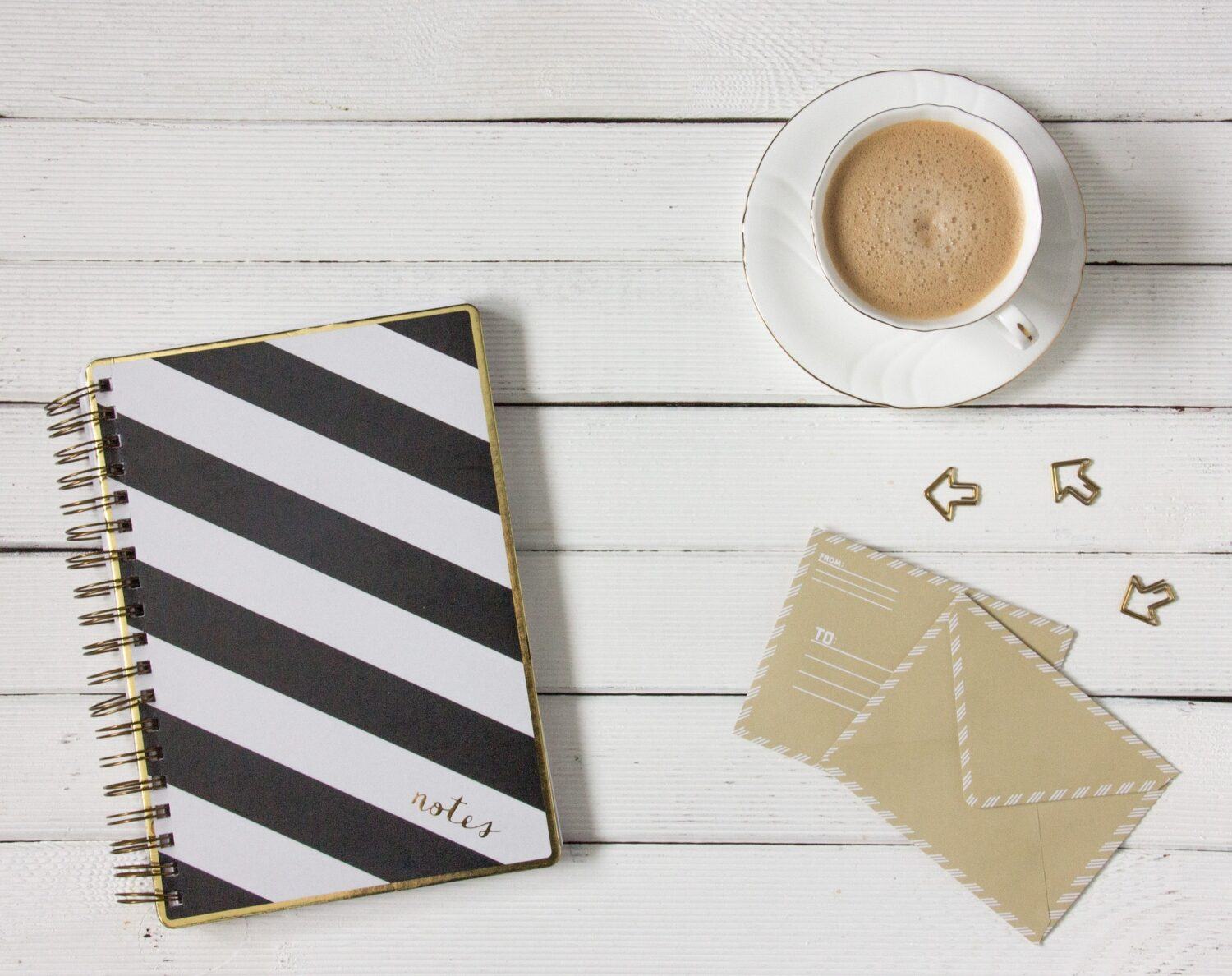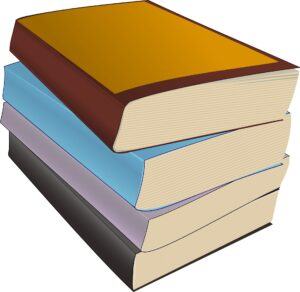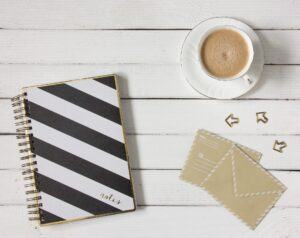Binding Matters
A couple of years ago I attended a conference where a speaker was giving an insightful, albeit complicated, keynote presentation. Due to the complexity of the subject matter, the presenter was obviously sensitive to the concern that she might overwhelm or confuse her audience. To mitigate this risk she decided to provide all conference participants with a beautiful saddle-stitched booklet. All the relevant information was included in outline form and the presenter even incorporated some colorful graphs and charts to assist the visual learners in the crowd.
It seemed like she had truly thought of everything. The information was clearly summarized in the durable little guide and it was a nice looking souvenir. To make the book look even more professional she had even placed her company name and logo right on the front cover.
As she wrapped up her speech, she revealed that there was an added bonus for those of us who had closely followed along. In the center of our booklets there was a blank diagram about the subject matter of her session. The first five of us to fill it out would receive a gift card to a popular local restaurant. Wow, I thought, what a great way to end a presentation!
We all flipped to the middle of our books and began furiously marking up the chart. However, as we finished, I realized that there was a problem. While it was true that the book was beautiful and professional looking, the page that the diagram was on was attached to another page. Thus, to remove it, we’d have to destroy the booklet.
Admittedly, it was probably an entertaining scene for anyone watching. Around fifty conference goers delicately trying to pull that one page out of the book without taking the other half of the paper with it only to throw their hands up in frustration when the booklet fell apart anyway.
So What?
While admittedly innocuous, this story demonstrates an important point; bindery shouldn’t be just an afterthought. Imagine, that instead of a room of interested industry professionals, the crowd was packed with potential customers. The last thing you’d want is to do anything to frustrate them.
And it happens all the time. Pitches, presentation and even portfolios have all been ruined by poor binding choice. The problem? If you’ve ever been locked in a competitive process to win a customer then you understand that you can’t afford to overlook any detail, no matter how small.
It is, however, easy to prevent this from occurring. That’s why we’ve created a brief binding cheat sheet below. Use this and you’ll never have to worry about choosing the wrong bind ever again. So read on and discover the seven essential bind styles you need to know.
Coil Bind
You probably already interact with coil bound materials every day without even realizing it. This variation is used extensively for publications such as directories, brand strategy playbooks and even cookbooks. With such widespread use it’s not surprising that they are among the most recognizable styles discussed here.
The method of coil binding involves taking a single piece of plastic and winding it through several small holes punched into the printed pages. The coil is then cut and crimped on the edges to finish. The advantage to this method is that it creates a sturdy and flexible spine that allows pages to open freely.
Additionally, the coils can vary in length, thickness and color. This level of diversity makes coil binds perfect for odd sized materials and creative agencies. However, there are some trade offs to consider when looking at coil binds. While affordable, they obviously don’t have the same professional feel that a VeloBind or perfect bind might and aren’t nearly as permanent.
Recommended Uses
- Brand playbooks
- Directories
- Manuals
- Notebooks
- Conference presentations
- Creative marketing pitches
Perfect Bind
Have you ever thought about self-publishing a book? If so, this style is perfect for you. (You’re right, that pun wasn’t funny. I promise there won’t be any more.) Kidding aside, perfect binds look and function exactly like a paperback book.
During the binding process a flexible adhesive strip is used to attach a paper cover to the spine. The product is then pressed together and excess paper is trimmed off.
Sturdy and durable, perfect binds look and feel exactly like a paperback book. They’re easy to stack and have a distinctive professional quality. However, because they don’t lie flat when open and their pages cannot be easily removed, they shouldn’t be used for traditional presentations.
Recommended Uses
- Self-published books
- Telephone directories
- Permanent training manuals
- Internal corporate materials
Wire Bind (Twin Loop Bind)
Trying to achieve a modern or futuristic feel? Say hello to the wire bind. Also known as a twin loop bind, this style is extremely popular with creative agencies and marketing firms. Wire binds utilize a “C” shape spine to hold their pages together. Documents slide onto the wire spine, which is clamped closed to keep them in place.
As a result, wire bound materials will lie completely flat when open and their pages can be rotated 360 degrees. These two features make them excellent choices for desktop calendars or content guides.
In addition to all of the advantages possessed by coil binds, twin loop binds also last slightly longer due to their extra support rings. While this makes the pages a bit harder to remove, it is definitely beneficial for agencies that want the affordability of a coil bind with a more polished aesthetic.
Recommended Uses
- Calendars
- Marketing presentations
- Strategy guides
- Corporate pitches
VeloBind
Professional, modern and elegant. These are the three adjectives that best describe the VeloBind style. The VeloBind system starts by punching a number of holes along the edge of a book. A strip of plastic with protruding comb like pieces of plastic is then placed on the top of the book. These comb-like protrusion (called tines) are inserted through the punched holes and another plastic strip that is placed on the back of the book. The work is then held together by a special machine while the extra tine length is trimmed and the tips are melted to seal the bind.
While VeloBinds can be removed, it is difficult to do so without proper equipment. Thus, we recommend VeloBinds for permanent hardcover materials such as legal document books. Additionally, while VeloBinds stack and store easily, they do not lie flat when open.
Recommended Uses
- Financial Reports
- Smaller Booklets
- Legal Document Collections
Tape Binding
A tape bind takes a hot cloth adhesive strip and wraps it around one side of the printed material. What’s beneficial about this technique is that it requires no hole punch and the finished product will lie flat as a result. This characteristic makes it easy to stack, mail or file. It’s definitely one of the more affordable ways to create a polished looking publication.
Recommended Uses
- Training materials
- Bulk conference materials
- Workbooks
- Anthologies
Saddle-stitched Booklet
Saddle-stitched booklets are an affordable and versatile option for presentation or marketing materials. This method uses staples to hold pages together on their fold. However, the main drawbacks are that pages are not easy to remove (as I learned the hard way) and that the total number of pages that can be included is very limited. That being said, they are great for sleek promotional materials and guides.
Recommended Uses
- Promotional material
- Slim yearbooks
- Event programs
- Tiny booklets
- Magazines
- Brochures
Comb Bind
The final major binding technique covered here is called comb binding. This method uses a round plastic spine with tiny rings that are inserted through pre-punched holes. Once the rings close the spine will rest against the document.
This method is advantageous because it can be used for various sizes and hardcover finishes. The true benefit, however, is that the spine can be reopened in the future to add or remove pages. Thus, it is a cost-effective solution for materials that will need to be updated over time. Like coil binds, the spine color can be customized to add a bit of pizzazz.
Recommended Uses
- Workbooks
- Employee handbooks
- Constantly updated directories
- Conference materials
- Any commonly updated publisher
- Reference materials
Now What?
Now that you have an overview of the more common binding styles, why not try one out on your next project? Our accomplished document services department is always ready to help and answer any questions that you may have. Just fill our free project quote form or give us a call at (612) 798-1362.
Looking for another service? Visit our binding services page to view a comprehensive list of our offerings.







